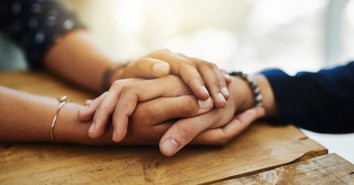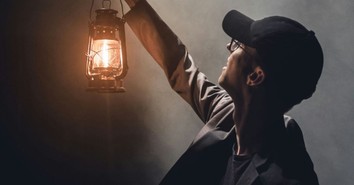The Soul of the Nation

When you enter someone's home, you notice things like sofa pillows, kitchen chairs and magnets on the fridge. Basic furnishings, eclectic doodads and pictures on the wall are a reflection of the people who live there. In a pencil-sketch sort of way, they give you a glimpse of what's important to them, how they live and whether they run the vacuum once a week or once a month.
We have taken our family on several tours of our nation's capitol in hopes they might form a picture of who we are as Americans. By strolling the mall, maneuvering along Constitution Ave. and standing at the feet of Lincoln, you can see a pencil-sketch of who we are as a country.
Among the marble slabs, looming columns and echoing hallways are the faint heartbeats and soft whispers of those who framed our foundation. There is a deep sense of soul in our nation's home (shame on you cynics for sneering). Take your time, study the details, and you will see it is there.
Reflections of our nation's soul abound in the Capitol. Inside the House Chamber, years ago, some rascal chiseled the words, "In God we trust." Pity the scribe who tries that today.
Also in the House Chamber are 23 marble relief portraits over the gallery doors. They are the strong chins and prominent noses of men who contributed to the foundations of law. Each of the profiles face toward the only relief that is full-face - Moses, the Hebrew who carried the Ten Commandments down Mt. Sinai and transformed a wandering, rambunctious people into a strong nation.
In the Senate Chamber, there is yet another "In God we trust," over the south entrance.
The inscription over the east doorway is Latin, "Annuit coeptis," meaning God has favored our undertakings. "Annuit coeptis" is also in the Prayer Room. A Prayer Room in the Capitol may come as a shock, but prayer is still legal -- or at least was at the time of this writing. The Prayer Room also contains an inscription from Psalm 16:
"Preserve me, O God; for in thee do I put my trust."
Hanging in the rotunda are four enormous paintings that dwarf visitors and depict early exploration. In one, Columbus is shown standing as a man kneels in prayer. Another shows explorer Hernando DeSoto viewing the mighty Mississippi. DeSoto watches as a monk prays and a crucifix is set in the ground. A third painting is of pilgrims on the deck of the Speedwell gathered around an open Bible and a fourth is of Pocahontas being baptized in Jamestown.
As one wit has said, "There you have it, two prayer services, a Bible study and a baptism right here in the rotunda and not a thing the ACLU can do about it."
At the Jefferson Memorial are panels inscribed with excerpts from his writings. "I have sworn upon the alter of God eternal hostility against every form of tyranny over the mind of man." Interesting oath coming from the man that modern men armed with briefcases, law degrees and sharp suits, claim would strip all references to faith from the public square.
On the south wall of the Lincoln Memorial is the Gettysburg Address. Linger a bit and you will notice a mural above it depicting the beautiful angel of truth freeing a slave.
One of the most personal touches can be seen in the state dining room of the White House. Carved into the fireplace mantel below a portrait of President Lincoln is an inscription from a letter John Adams wrote to his wife Abigail, upon spending his second night in the White House: "I pray Heaven to Bestow the Best of Blessings on THIS HOUSE and on All that shall hereafter Inhabit it. May none but honest and Wise Men ever rule under this roof."
At the very top of the Washington Monument, on the east face, is the inscription, "Laus Deo" meaning Praise to God. Nobody but birds can see that inscription, yet some builder, some designer, some President, someone who thought of the Capitol as home, thought that was an important detail.
As our home's furnishings tell a thing or two about us as a family, so the nation's furnishings tell a thing or two about us as a nation. In both cases, it's always nice to make a visit home.
Originally published July 08, 2004.







